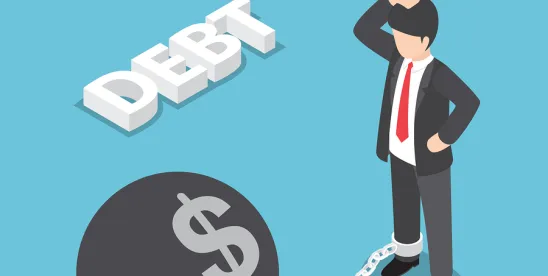The Paycheck Protection Program (PPP) under Title I of the CARES Act was established on March 27, 2020 to provide financial relief for small businesses adversely affected by COVID-19. The CARES Act initially allocated $349 billion to the PPP but on April 15, 2020, the SBA announced that it was no longer able to accept new applications based on existing appropriations. On Tuesday, April 21, 2020, the Senate passed a relief package that, if passed by the House and signed into law, will provide the PPP with an additional $310 billion in funding. For more information on eligibility and permitted uses of PPP proceeds, see SBA Loans Under the CARES Act.
In their understandable haste to secure PPP funding, many borrowers and lenders may not have worked through all legal and the operational issues relating to those loans and their impacts on existing credit documents. If they have not done so already, such borrowers and lenders should consider the following and work through these issues in a constructive manner to protect their interests.
PPP Loans and Existing Senior Lending Facilities
PPP Loans have features that should make them attractive to both borrowers and their existing lenders, such as the unsecured status of the loans, low interest rate, deferred payment terms, and loan forgiveness features. However, PPP Loans may be treated as additional debt for purposes of existing loan covenants, even if they are expected to be forgiven. Borrowers with existing credit facilities in place should carefully review their loan documents for potential conflicts and potential consequences of applying for, receiving and repaying PPP Loans. It may be necessary to obtain consents from existing lenders (even if an existing lender made the PPP Loan to a borrower) and to amend existing debt arrangements to accommodate the PPP loans.
Considerations include the following:
- Negative Covenants Restricting Indebtedness. Many loan agreements contain restrictions on the incurrence of additional debt outside of permitted “basket” amounts and specified categories of permitted debt. Many debt covenants permit additional subordinated debt, but PPP loans (even though unsecured) are not junior in right of payment.
- Impact on Financial Covenants. PPP loans may be counted as indebtedness for purposes of leverage covenants and scheduled payments of principal and interest on PPP loans (even if expected to be forgiven) may be counted as debt service for purposes of fixed charge coverage ratio calculations or debt service reserve fund requirements.
- Effects on Calculation of Earnings before Interest, Taxes, Depreciation, and Amortization (EBITDA). Borrowers and their lenders will want to reach an understanding on whether PPP loan proceeds would count as an “add-back” amount towards building EBITDA, and whether the add-back will depend on projected forgiveness when the application is made or actual forgiveness after the forgiveness amount is determined. This discussion should be had in context of whether debt service on PPP loans will factor into fixed charge coverage calculations. Borrowers and their lenders may want to exclude some or all of the PPP loans from EBITDA calculations so they are neutral with respect to EBITDA and other financial covenant measurements.
- Mandatory Prepayments with Proceeds of PPP Loans. Many loan agreements contain mandatory prepayment provisions that require the existing debt to be prepaid from proceeds of any additional debt. Proceeds of PPP loans are not permitted to be used to prepay other debt.
- Controlled Accounts and Automatic Sweeping Mechanisms. If a borrower has an asset-based lending arrangement or other secured lending structure that includes controlled operating accounts, the borrower and its lender should consider whether there are alternatives to placing the PPP loan proceeds into such a controlled account where it might be subject to cash sweeping mechanisms and applied to payment of existing senior debt or other impermissible uses.
- Segregating Accounts for PPP Proceeds. Borrowers and their lenders may want to require that loan proceeds be held in a segregated or sub-account, and borrowers should keep a detailed record of how proceeds are used.
- Setoff Rights. Evaluate all setoff rights to determine if the existing lender may be entitled to exercise setoff rights against outstanding PPP loan obligations and loan proceeds in the event of a default or otherwise.
- Borrowing Base Availability. If a PPP loan is added to a borrower’s existing credit facility that includes a borrowing base or other restrictions on borrowing availability, the PPP loan may cause the total outstanding borrowings to bump up against such limitations, and future changes in the borrowing base may trigger mandatory prepayment obligations.
- Cross-default Provisions. Borrowers and lenders should be aware of how default under a PPP loan may trigger cross-default provisions under existing debt facilities. Similarly, Borrowers and lenders should be aware of how a technical default under an existing credit facility with a lender that extended a PPP Loan without formal consent may trigger cross-default provisions under other debt documents.
Relative Priority of PPP Loans in Right of Payment
Borrowers and their existing lenders will want to clarify the ranking and relative priority of PPP loans in relation to existing senior and subordinated debt. PPP loans are unsecured but, since they are not contractually subordinated, they have equal priority in right of payment to existing senior debt of the borrower. Considerations include the following:
- Is the PPP lender the same as the borrower’s existing senior lender or is the PPP loan coming from a different bank? Evaluate the consent and priority requirements even under existing senior debt documents with the PPP lender. Under the terms of existing intercreditor agreements, will the PPP loan be treated as a separate category (or “tranche”) of debt or will it be layered into an existing tranche of debt?
- If the borrower has multiple levels of senior and subordinated debt, where does the PPP loan fall in the capital stack? Existing senior and subordinated lenders may have different views on how the PPP loan should be treated.
- Parties should examine any existing subordination arrangements to determine whether the PPP loan will be treated as senior debt and if not whether the PPP program terms are consistent with the subordination requirements. Under many subordination agreements, senior debt in excess of a specified cap amount is not entitled to the benefits of the subordination.
- Consent may be required from subordinated lenders who may be disinclined to consent because the PPP loan is not subordinated in right of payment to existing debt.
Unsecured Status of PPP Loans
Under the terms of the PPP loan program, PPP loans are unsecured. However,
- if the PPP loan is provided by the borrower’s existing senior lender (where the borrower likely maintains its operating accounts), would the lender be entitled to exercise setoff rights against outstanding PPP loan obligations in the event of a default?
- Existing loan documents may already provide that other obligations such as PPP loans are automatically secured by collateral.
- Could the lender also require as a condition to approving the loan that the existing security documents be amended to cover the PPP loan obligations, effectively cross-collateralizing the PPP loan?
Guidance for Borrowers and Lenders Following Approval of PPP Loans
Because of pressures to move quickly, execution of PPP loan documents and funding of the PPP loans often occur without close review of existing debt arrangements and intercreditor relationships that may be altered or affected by the additional PPP loans. Because of these factors, it is especially important for borrowers and their existing lenders to review PPP loan documents and program requirements in the context of existing debt arrangements to identify any issues that may arise. It may be necessary for borrowers to obtain consents from existing lenders to permit the PPP loans, and to amend existing loan documents and subordination arrangements to avoid any unintended consequences under existing debt arrangements.
Main Street Lending Program and Intercreditor Considerations
The Main Street Lending Program, established under Section 13(3) of the Federal Reserve Act, aims to provide additional liquidity for existing small and medium-sized businesses. We expect this program, when fully implemented, to present similar intercreditor issues for borrowers and lenders to consider. We will release another client alert discussing those issues as more details regarding the program are released. For more information the Main Street Loan Programs available for small and medium sized businesses, click here.







 />i
/>i

